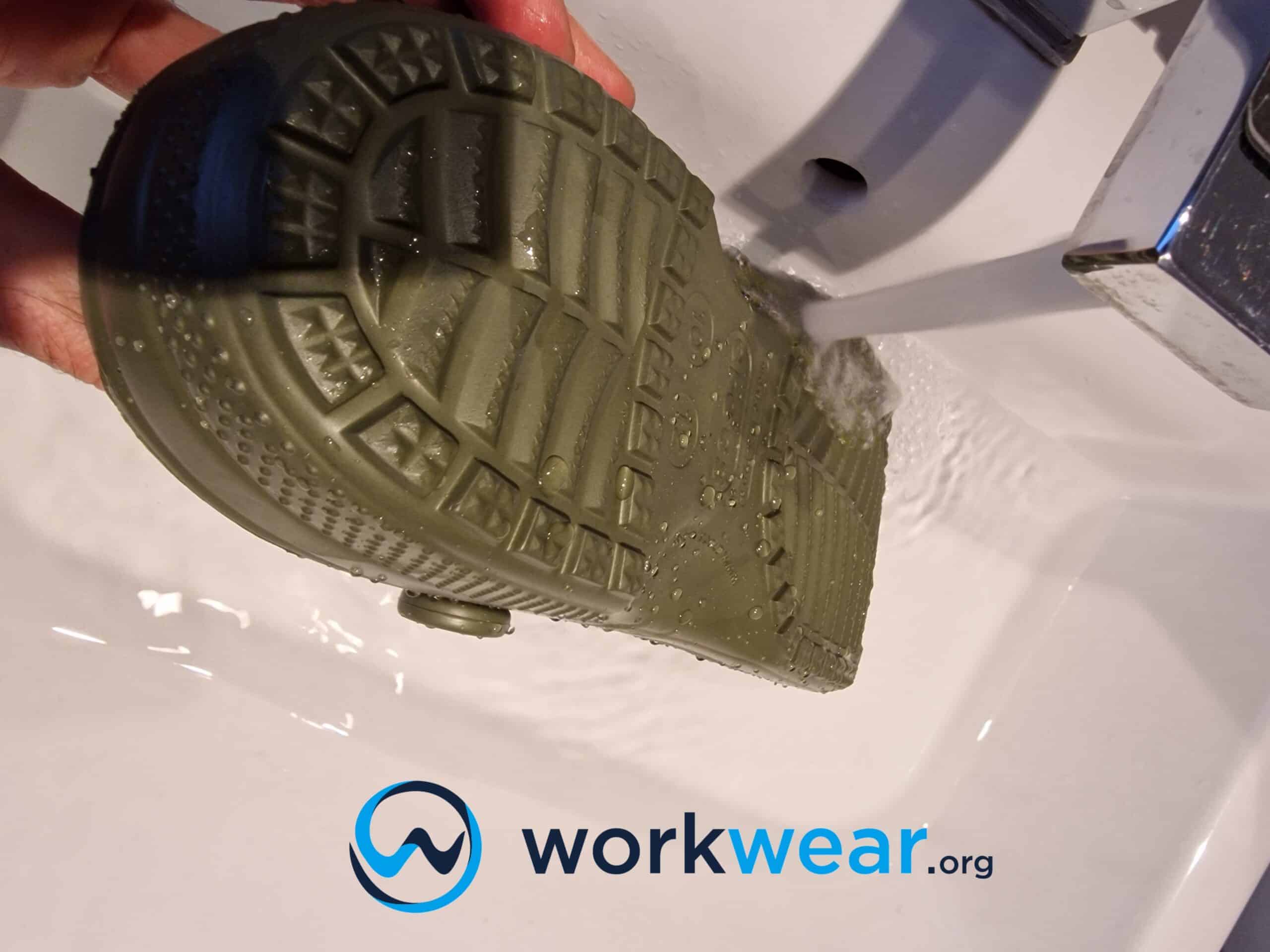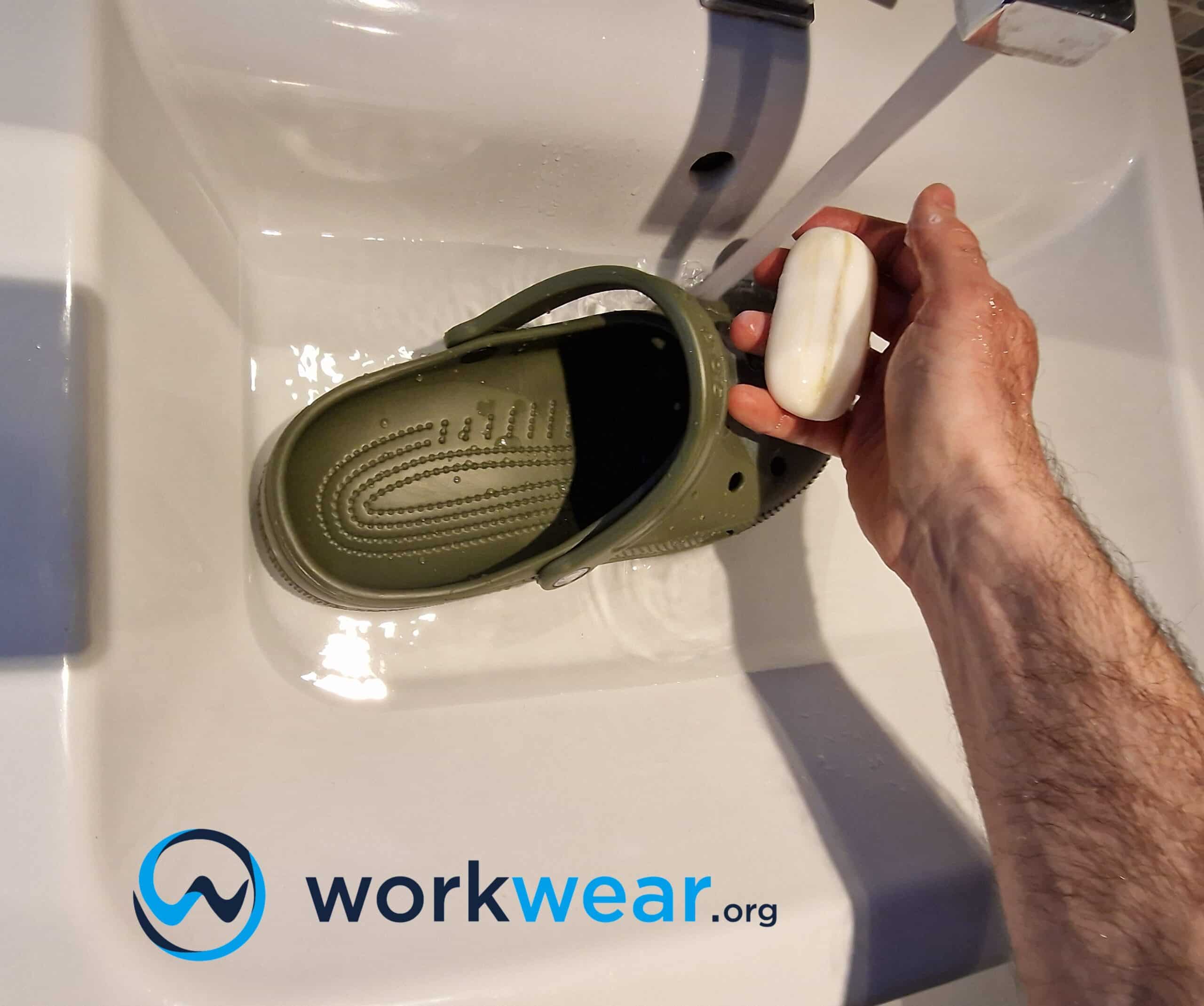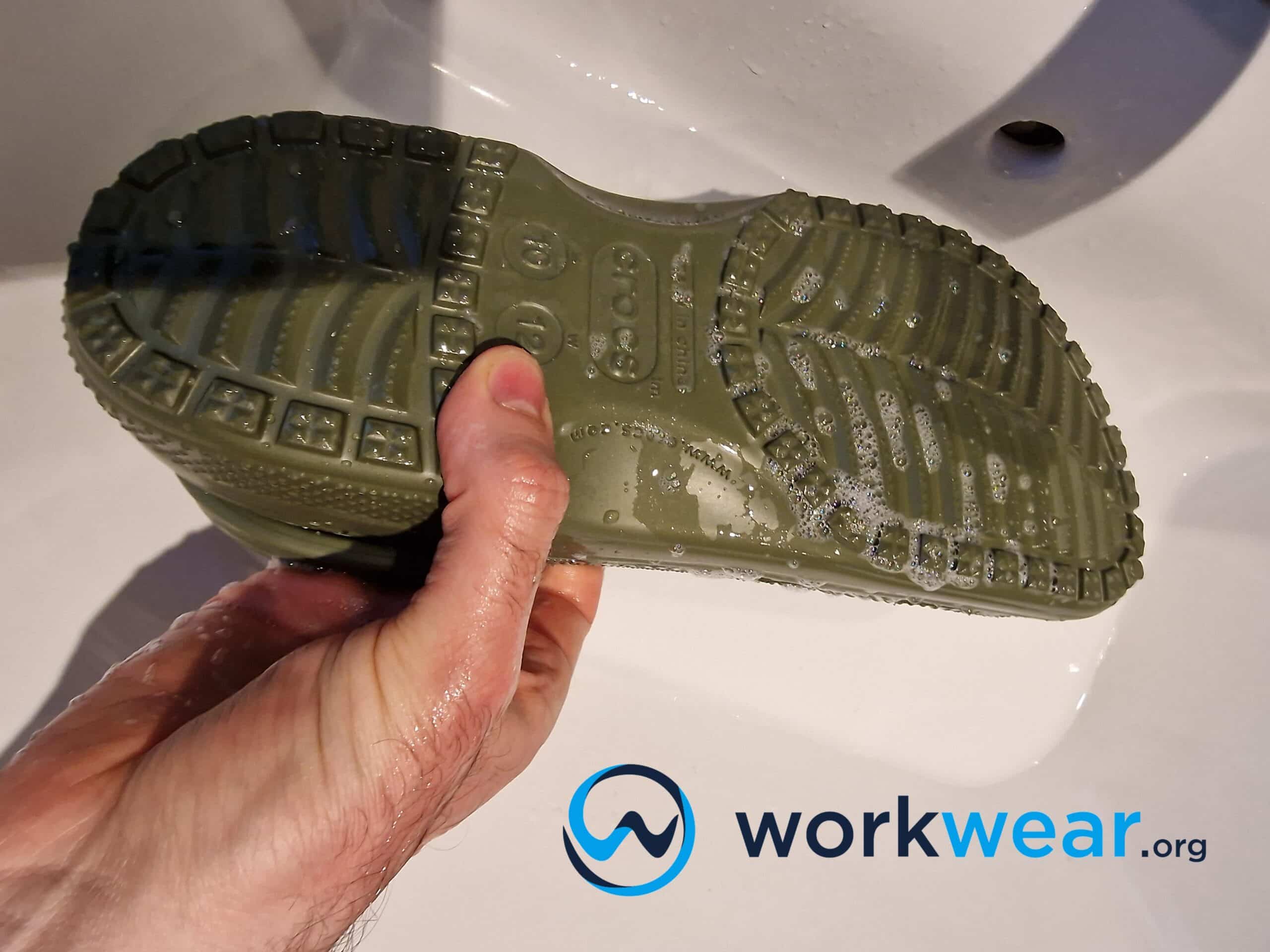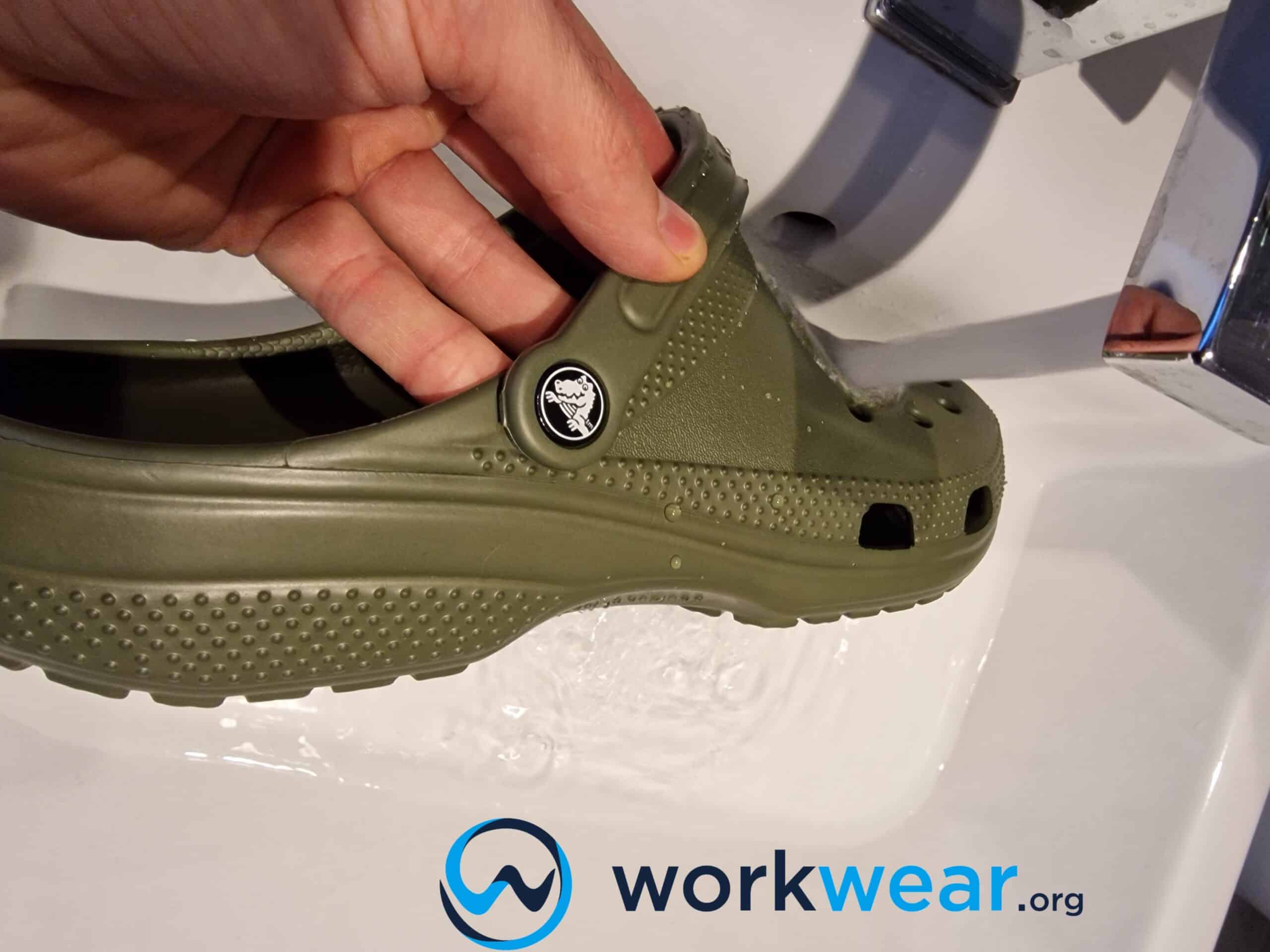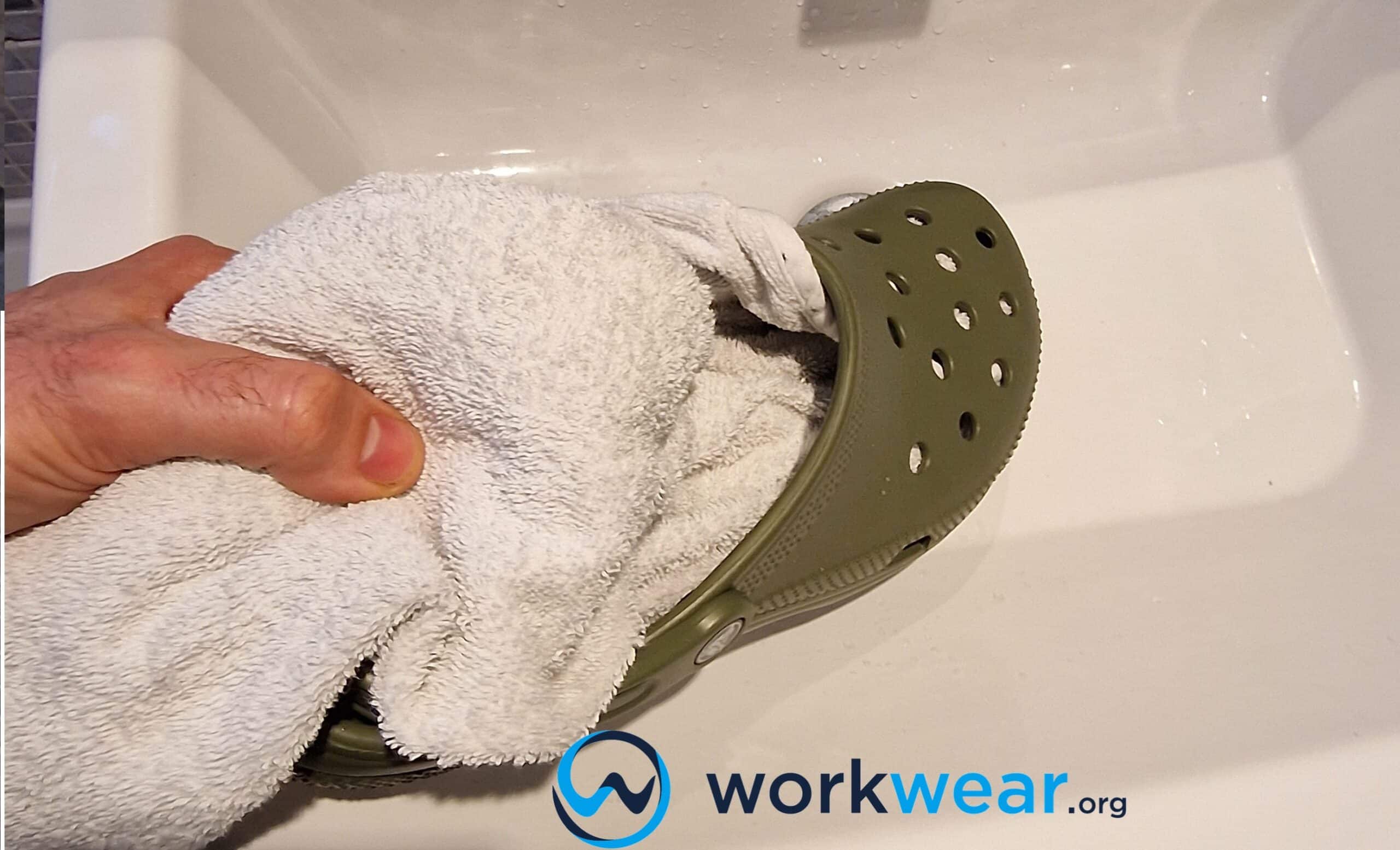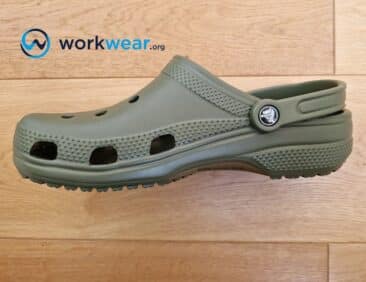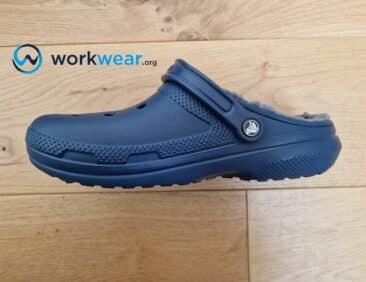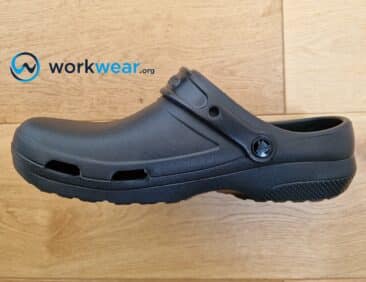How-to Clean Your Crocs – Explained & Demystified
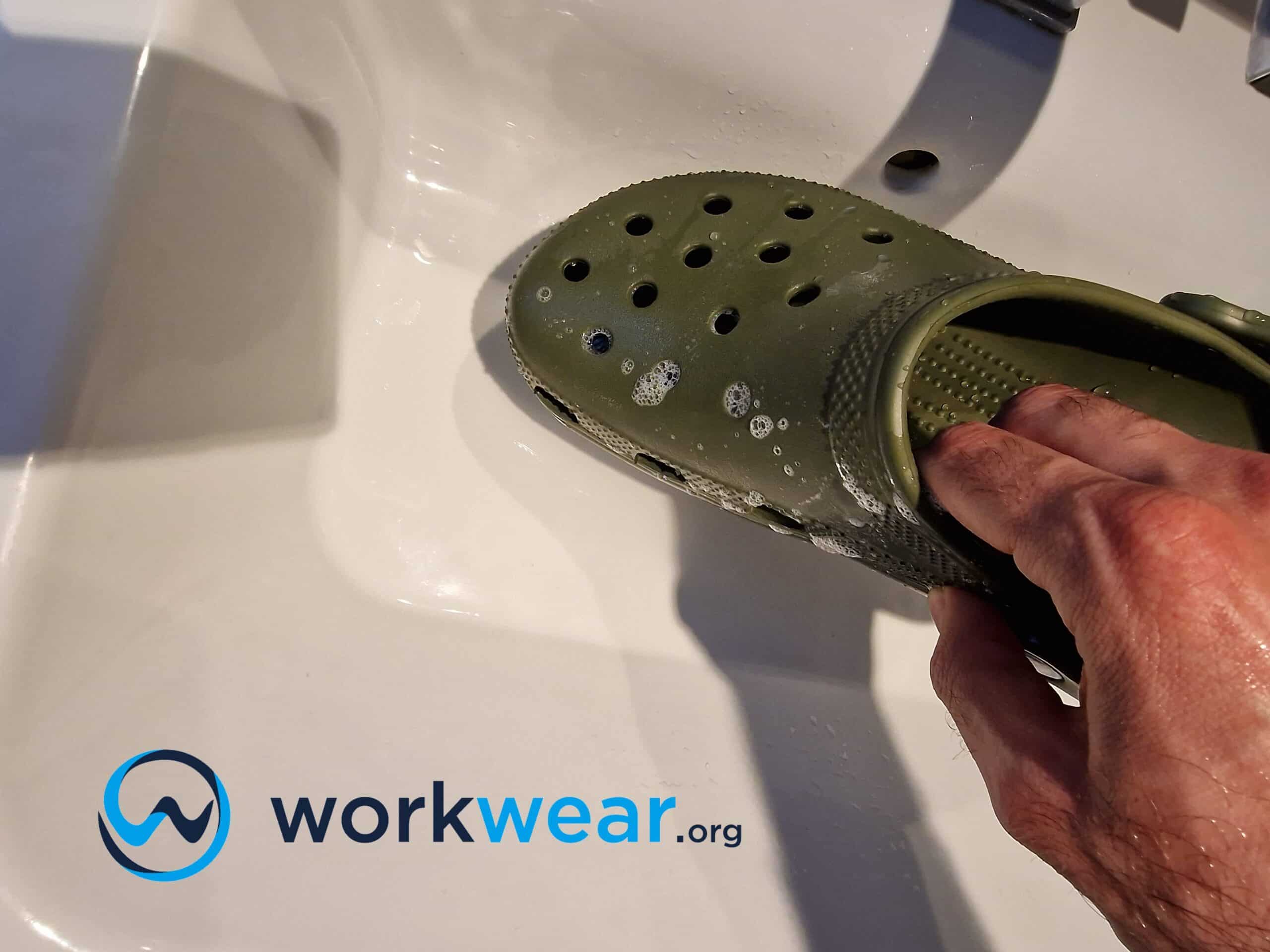
When was the last time you cleaned your Crocs? If you’re one of the footwear brand’s numerous fans (like us!), you most probably use the clogs for virtually every activity imaginable. Heavy use and abuse can take their toll, which is why it’s a good idea to clean your Crocs from time to time as they gather dirt, dust, and other unmentionables (depending on how and where the clog are used).
Cleaning your Crocs may not be your favorite thing to do, but we guarantee that you’ll enjoy the clogs even more if they’re not bogged down with dirt. You’ll be surprised at how easy it is to get rid of the dirt build-up in and around the footwear using just a few items. We’ll take you through the hassle-free cleaning process so you can be on your way to enjoying your pristine Crocs pair.
But before we get to the cleaning procedure, let’s take a quick look at some details that make our beloved Crocs stand out among other footwear brands.
What are Crocs made of?
It’s easy to assume that Crocs are made out of rubber, but they’re not. Our much-loved and used clogs are crafted out of a proprietary closed-cell resin called Croslite that gives that unique softness and bounce. This lightweight material absorbs the impact of each step for a more comfortable walking experience.
Croslite is designed to inhibit bacterial and fungal growth as well as resist odors – but that doesn’t mean you should let dirt and sweat build up on your Crocs! Also, please don’t wait for bad smells to develop before you plan on cleaning the clogs. Don’t forget to check the super-easy cleaning steps we’ve shared below to keep your Crocs feeling, looking, and smelling like new.
By the way, Crocs more recently developed another cutting-edge material called LiteRide – a revolutionary foam material that’s 25% lighter and 40% softer than Croslite. In addition, it’s available in specific clogs and shoe models, offering an even more enjoyable way of maximizing your Crocs.
Does Crocs only manufacture clogs?
If you’re a long-time fan of Crocs clogs and you didn’t see the need to check out other models, you might be surprised by the number of product choices that the brand offers. Aside from the beloved classic option, Crocs also offers clogs for professional use, making them fast favorites of those working in kitchens and hospital settings. There are also several types of closed shoes, boots, heels & wedges, sandals, slides and flip-flops offered in a dazzling array of colors and prints – so there’s always something that will catch your eye and make you fall in love with Crocs even more.
Now, it’s time to get your pair (or pairs?) of Crocs out so you can give it a good scrub down.
How to Clean Your Crocs
Crocs are pretty easy to clean because of their material. Unlike other shoes that need tender loving care, you can throw your Crocs in a washing machine to clean it, especially if there’s a lot of dirt build-up that needs to be removed.
If you haven’t used your Crocs in muddy or extremely dirty areas (or if you’ve been pretty diligent with cleaning them regularly), you can hand-wash the clogs to get rid of dust, dirt, or sweat that’s accumulated throughout the footwear.
You won’t need special tools or products to clean your Crocs. You can clean the clogs indoors in the sink or even outdoors in the garden or yard – wherever the mood for cleaning strikes, just make sure that you don’t end up getting the clogs even dirtier in the process. If your clogs have charms attached, you’ll need to remove these so they can be hand-washed separately.
“We cleaned our favorite Crocs Classic Clogs in Olive Green using Zote white laundry bar soap and water.
4 Steps to Clean your Crocs
1. Get the Crocs wet with water.
2. Carefully apply soap to the inside and exterior parts of the clog.
3. Thoroughly rub the areas that usually get dirtier, such as the inner parts, toe area and outsole.
4. Rinse the clogs well.
5. After checking that the clogs are completely free of dirt, it’s time to dry them using any of the options below:
- Outdoors – you can do this if the weather is a bit warm and not wet/raining, so the clogs can dry naturally.
- Using a Towel – if the weather isn’t that good (or if it looks like it’s about to rain), you can towel dry the clogs instead.
Conclusion
Cleaning your Crocs is a straightforward process that won’t take up too much of your time. The task doesn’t have to be complicated as the Crocs material is designed for convenient cleaning and maintenance. Keeping the Crocs clean can help prolong their life, so you can get the most out of your investment while allowing you to maximize the aesthetic and functional benefits. With just a bit of effort and patience, you’ll once again get to enjoy your Crocs in their cleanest and freshest condition.
FAQs
- Are Crocs clogs difficult to clean and maintain?
- No, they’re very easy to clean! The Croslite material is waterproof and can easily be washed by hand with just soap and water, unlike other shoe materials that need special tools and cleaning solutions. These clogs can also be cleaned conveniently in the washing machine.
- What makes Crocs clogs good for work settings?
- The Croslite and LiteRide materials that are used for Crocs clogs have soft structures that mold to the feet. This quality keeps the feet nicely cushioned, offering superior comfort that lasts throughout the long hours of standing or walking in the workplace. The materials have a bouncy structure that soaks the shock to prevent foot fatigue. Meanwhile, the waterproof materials protect the feet against accidental spills, while ventilation ports around the clogs help keep the feet cool for longer.
- Do Crocs footwear protect the feet from getting wet?
- It depends on the model or style. Crocs Classic Clogs are waterproof, but since they have holes on the upper portion, liquids can still get in and make the feet wet.
- What’s the difference between Croslite and LiteRide?
- Both materials are waterproof, absorb impact, and mold to the foot for superior comfort. However, LiteRide is designed to be 40% softer and 25% lighter when compared to the original Croslite material, making it suitable for leisure and professional use as it can deliver enhanced comfort even when used for standing for long shifts.
